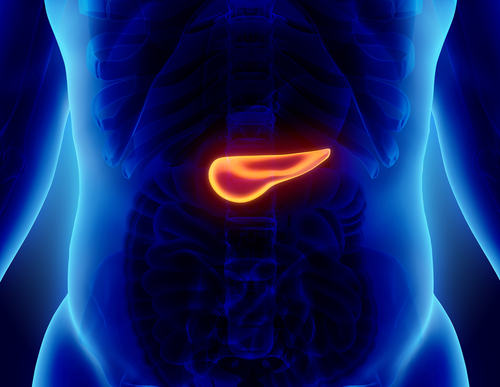07 Jan Managing and Treating Chronic Pancreatitis
Pancreatitis is a disease affecting the pancreas. Damage starts to occur once digestive enzymes are activated and begin to attack the pancreas before they enter the small intestine. The pancreas is important because it releases digestive enzymes which help with food digestion and also, releases insulin and glucagon into the bloodstream. These are important for energy production. When pancreatitis occurs, the pancreas itself becomes inflamed.
 Acute pancreatitis may occur suddenly and last for only a short time, however, during that time, symptoms experienced can be severe. For some people, symptoms are less painful but overall, people will recover quickly from these bouts. Chronic pancreatitis will not heal. In fact, symptoms become worse over a period of time and in time, it will stop the individual from being able to digest food so to make pancreatic hormones. Men appear to be affected more than women when it comes to chronic pancreatitis and it affects those who are between the ages of 30 and 40 years.
Acute pancreatitis may occur suddenly and last for only a short time, however, during that time, symptoms experienced can be severe. For some people, symptoms are less painful but overall, people will recover quickly from these bouts. Chronic pancreatitis will not heal. In fact, symptoms become worse over a period of time and in time, it will stop the individual from being able to digest food so to make pancreatic hormones. Men appear to be affected more than women when it comes to chronic pancreatitis and it affects those who are between the ages of 30 and 40 years.
There are several known factors leading to this health condition:
- Drinking too much alcohol
- Autoimmune diseases
- Blocked pancreatic duct
- Familial pancreatitis
Sometimes, there are rare cases of pancreatitis which occur following problems with the body’s immune system. It is still not clear why this happens. An article published recently depicted that although alcohol is an environmental risk factor for pancreatitis, the gene CLDN2 plays a key role in increasing the risk of alcohol-related pancreatitis.
Symptoms can be extensive.
- Pain in the upper abdominal area can be significant and this pain may spread so that even the back becomes painful. It may become worse after eating or drinking.
- Nausea, vomiting, diarrhea and weight loss is likely.
- Weight loss occurs because the body is not able to secrete sufficient enzymes which help to break down and absorb food so, malnutrition is likely.
The forecast for those with this condition is ongoing pain and a need for hospital treatment.
Fortunately, there are some alternative therapies which can be used alongside conventional medicines to help both mind and body. Yoga can help offset feelings of stress, it will also balance fluctuating moods, and may reduce dependency on alcohol. Generally, life can start to feel a little better. Massage can also be a useful treatment as it improves circulation, reduces inflammation and, alleviates pain. It’s also a wonderful stress reducer. Meditation helps to reduce the impact of stress, anxiety and tension, improving sleep which helps the body to heal. Exercise can help alleviate feelings of depression, fatigue and will decrease stress. It will also impact hormonal balance and improve heart rate. Even walking for 5 to 10 minutes a day would be a good starting point.
There are different treatments that can be considered as part of the diagnostic process including magnetic resonance cholangiopancreatography (MRCP) where dye is injected into the person’s veins and this helps to show the pancreas, the gallbladder, pancreatic and bile ducts. A computerized tomography (CT) scan may also be used as this shows the gallstones and damage that has occurred to the pancreas.
An additional treatment is that of a celiac plexus block and can be used when someone has severe abdominal pain associated with chronic pancreatitis, it also works well for pancreatic cancer. When the celiac plexus nerves are blocked, it helps to alleviate pain associated with this condition. This can give some relief. Treatment is quick and although the individual may feel a little sore for a few days, the benefits of having this treatment will give pain relief for 3 months and so, will improve quality of life and that’s important.




Sorry, the comment form is closed at this time.